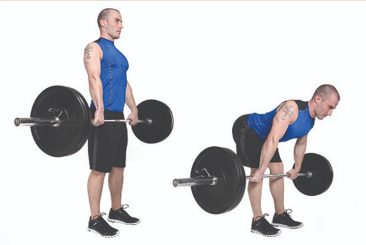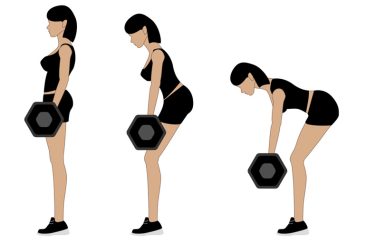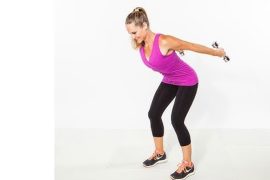Leg exercises are crucial for building strength, muscle, and endurance in the lower body. They target various muscle groups including the quadriceps, hamstrings, glutes, and calves. Some of the top leg exercises include squats, which work the entire lower body; deadlifts, which engage the hamstrings, glutes, and lower back; lunges, which focus on the quadriceps and glutes; leg press, which isolates the quadriceps; and Romanian deadlifts, which strengthen the hamstrings and glutes. Other effective leg exercises include step-ups for balance and leg strength, calf raises for the calves, glute bridges for glute activation, Bulgarian split squats for single-leg stability, and hamstring curls for the back of the thighs. Maintaining proper form and gradually increasing the intensity are key to maximizing the benefits of leg exercises while minimizing the risk of injury.
1. Squats:
Squats are a fundamental and highly effective leg exercise that engages multiple muscle groups. By bending at the hips and knees, squats primarily target the quadriceps, hamstrings, and glutes. They also engage the core and lower back muscles for stability.

Squats can be performed with various equipment, including barbells, dumbbells, or just your body weight. They are versatile and can be modified to suit different fitness levels. Proper form is essential to prevent injury and maximize the benefits of squats. Incorporating squats into your workout routine can help improve leg strength, muscle development, functional movement, and overall lower body fitness.
2. Deadlifts:
Deadlifts are a fundamental compound leg exercise involving lifting a weight from the ground to a standing position. By engaging the hamstrings, glutes, lower back, and core, they promote full-body strength and development. Executed by hinging at the hips and bending the knees, proper form is crucial to prevent injury.

There are variations like conventional, sumo, and Romanian deadlifts, each targeting specific muscle groups. Incorporating deadlifts into a workout routine enhances overall strength, posture, grip, and muscle growth, but beginners should prioritize learning correct technique under professional guidance to ensure safety and optimal results.
3. Lunges:
Lunges are a versatile and effective leg exercise involving stepping forward, backward, or sideways while bending the knees. They primarily target the quadriceps, hamstrings, and glutes while engaging core muscles for stability. Lunges can be customized with variations like forward, reverse, walking, and lateral lunges, each emphasizing different muscle groups and balance challenges.

Maintaining proper form is crucial, focusing on an upright posture and proper alignment of the knees. Lunges can be done with bodyweight or added resistance for increased intensity. Incorporating lunges into workouts enhances leg strength, muscle development, and functional movement, but gradual progression and attention to technique are essential for optimal results and injury prevention.
4. Leg Press:
The leg press is a machine-based leg exercise designed to target the muscles of the lower body. In this movement, you push a weighted platform away from your body using your legs. It primarily engages the quadriceps, hamstrings, and glutes, similar to squats but with a different range of motion and emphasis. The leg press machine comes in various designs, including vertical, incline, and horizontal variations, each influencing muscle engagement.

Proper form involves positioning your feet on the platform shoulder-width apart, maintaining proper knee alignment, and avoiding fully locking out your knees. Incorporating leg presses into your routine can help develop leg strength, muscle size, and endurance. Starting with appropriate weight and gradually increasing it while focusing on maintaining good form is crucial for achieving desired results and minimizing injury risk.
5. Romanian Deadlifts:
Romanian Deadlifts (RDLs) are a valuable compound leg exercise that targets the hamstrings, glutes, and lower back. This movement involves holding a weight in front of your thighs, hinging at the hips while maintaining a slight knee bend, and then returning to a standing position. Unlike conventional deadlifts, RDLs prioritize hip hinging and hamstring engagement without fully lowering the weight.

Proper form includes a neutral spine, close weight positioning, and controlled hip movement. Incorporating RDLs in your routine can improve hamstring and glute strength, hip mobility, and overall posterior chain development. Careful attention to technique is essential to avoid potential strain or injury, particularly in the lower back.
6. Step-Ups:
Step-ups are a functional leg exercise where you step onto an elevated surface, typically a bench or step, using one leg at a time. This movement targets the quadriceps, hamstrings, glutes, and calf muscles, while also challenging balance and stability. By placing one foot on the platform and pushing through that leg to lift your body, you engage key muscle groups.

Variations include alternating legs or increasing the step height for added difficulty. Emphasizing proper form, with controlled movements and knee alignment, is crucial. Incorporating step-ups into your fitness routine can enhance lower body strength, coordination, and stability, making them a valuable addition to diverse workout plans.
7. Calf Raises:
Calf raises are a straightforward yet effective exercise targeting the calf muscles. By lifting your heels off the ground, you engage the gastrocnemius and soleus muscles of the calves. This exercise can be performed using just your body weight, or you can add resistance with dumbbells or machines. Stand with your feet hip-width apart, rise onto your tiptoes, and then lower your heels back down to complete one repetition.

Calf raises contribute to improved calf strength, muscle definition, and lower leg stability. To ensure safety and effectiveness, maintain controlled movements and gradually increase resistance as you progress in your fitness journey.
8. Glute Bridges:
Glute bridges are a highly effective lower body exercise that targets the gluteal muscles, especially the gluteus maximus. In this leg exercise, you lie on your back with your knees bent and feet flat on the ground, then raise your hips off the floor by squeezing your glutes and driving through your heels. The movement creates a bridge-like shape with your body. Glute bridges can be performed with your body weight or by incorporating resistance through weights or bands placed across your hips.

Proper form is vital, including maintaining a straight line from your shoulders to your knees at the top of the movement and fully engaging your glutes. Incorporating glute bridges into your routine helps strengthen the glutes, improve hip mobility, and contribute to better lower body strength and functionality. Gradually progressing in intensity and focusing on the mind-muscle connection will enhance the impact of this exercise.
9. Bulgarian Split Squats:
Bulgarian split squats are a single-leg strength exercise that targets the quadriceps, hamstrings, and glutes. In this movement, one leg is positioned behind you on an elevated surface, while the other leg performs a squatting motion. The rear leg’s position emphasizes a deeper stretch in the hip flexors. You lower your body down by bending your front knee, then push back up to the starting position.

This exercise improves lower body strength, stability, and balance. It can be performed using body weight or with added resistance using dumbbells or other weights. Ensuring proper form, with the front knee aligned over the ankle and maintaining an upright torso, is essential for maximizing benefits and reducing the risk of injury. Incorporating Bulgarian split squats into your workout routine can help address muscle imbalances and enhance lower body strength.
10. Hamstring Curls:
Hamstring curls are an effective isolation exercise that targets the muscles at the back of your thighs, the hamstrings. This exercise is commonly performed using a machine specifically designed for hamstring curls. In this movement, you lie face down on the machine and curl your legs by bending your knees, bringing your heels toward your glutes. Hamstring curls can also be done with resistance bands or stability balls.

Proper form involves controlling the movement and emphasizing the contraction of the hamstrings as you curl your legs. Hamstring curls help strengthen and develop the hamstrings, contributing to balanced lower body muscle development and improved knee stability. Incorporating this exercise into your routine can enhance leg strength and overall lower body function.
Leg exercises play a crucial role in achieving a well-rounded and functional lower body strength. From squats and lunges that engage multiple muscle groups simultaneously to targeted exercises like leg presses and hamstring curls, each movement offers unique benefits for muscle development, stability, and overall fitness. Proper form and progressive overload are key to preventing injury and maximizing results. Incorporating a variety of leg exercises into your workout routine can lead to improved strength, muscle definition, mobility, and overall functional capacity. Whether you’re aiming to enhance athletic performance, build muscle, or promote better everyday movement, a balanced and well-structured leg exercise regimen can help you achieve your fitness goals.
Disclaimer:
The information contained in this article is for educational and informational purposes only and is not intended as a health advice. We would ask you to consult a qualified professional or medical expert to gain additional knowledge before you choose to consume any product or perform any exercise.









